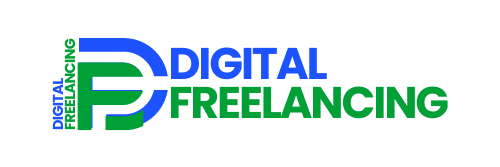How to Build Your Portfolio as a Freelancer in 2024
Introduction
In 2024, the freelance market continues to thrive, offering numerous opportunities for individuals seeking flexibility and independence in their careers. According to recent statistics, the global freelance workforce is expected to grow significantly, with more professionals opting for freelance work over traditional employment. The benefits of freelancing include the ability to choose your projects, work from anywhere, and achieve a better work-life balance. This article will guide you through the essential steps to build a compelling portfolio that attracts clients and showcases your skills effectively.
Step 1: Define Your Service and Offering
To start, identify the skills you possess and how they can be transformed into a service that solves a problem for potential clients. Popular freelance services include writing, graphic design, web development, digital marketing, and consulting. For example, a graphic designer might offer logo design, branding, and social media graphics.
Tools and Resources:
- Skillshare and Coursera for skill development.
- Canva for creating design portfolios.
- Upwork and Fiverr to explore popular freelance services.
Step 2: Find Your Target Audience and Niche
Research and identify your ideal clients and the niche you want to focus on. Understanding your target audience helps tailor your services to meet their specific needs. Use online platforms, social media, and networking to find and reach out to your target audience.
Tips:
- Join industry-specific forums and groups on LinkedIn and Facebook.
- Use tools like Google Analytics and SEMrush to understand market trends.
- Attend virtual networking events and webinars.
Step 3: Develop a Pricing Structure and a Payment System
Setting your rates involves choosing between hourly or project-based pricing. Consider factors such as your skills, experience, value, and market demand when pricing your services.
Tools and Resources:
- FreshBooks and QuickBooks for invoicing and payment tracking.
- PayPal and Stripe for secure payment processing.
- Glassdoor and PayScale to research industry-standard rates.
Step 4: Create Your Portfolio and Personal Brand
Showcase your work and skills in a professional and attractive way. Create a portfolio website, a resume, and a bio that highlight your strengths and personality.
Tips:
- Use platforms like Wix, Squarespace, or WordPress to build your portfolio website.
- Include client testimonials and case studies to build credibility.
- Optimize your portfolio for SEO to increase visibility.
Step 5: Write a Great Proposal and Pitch Your Services
Crafting a compelling and customized proposal is crucial to convincing potential clients to hire you. Focus on a catchy headline, a clear introduction, a detailed scope of work, and a strong call to action.
Tips:
- Catchy Headline: Grab attention with a headline that highlights the main benefit of your service.
- Clear Introduction: Introduce yourself and explain why you’re the best fit for the project.
- Detailed Scope of Work: Outline what you will deliver, the timeline, and any milestones.
- Strong Call to Action: Encourage the client to take the next step, whether it’s scheduling a call or signing a contract.
Tools and Resources:
- Proposify and Bonsai for proposal templates.
- Grammarly for proofreading and enhancing your writing.
- Canva for designing visually appealing proposals.
Step 6: Deliver Quality Work and Communicate Effectively
Delivering your work on time, on budget, and according to the client’s expectations is crucial for building a good reputation. Effective communication throughout the project ensures that you and your client are on the same page.
Tips:
- Set Clear Expectations: Define the project scope, deadlines, and deliverables upfront.
- Regular Updates: Keep your client informed about the progress and any potential issues.
- Feedback and Revisions: Be open to feedback and willing to make necessary revisions.
Tools and Resources:
- Trello and Asana for project management.
- Slack and Zoom for communication.
- Google Drive for file sharing and collaboration.
Step 7: Grow Your Freelance Business and Network
To sustain and grow your freelance business, focus on getting repeat business, referrals, and testimonials from satisfied clients. Marketing your services and expanding your network will help you find new opportunities.
Tips:
- Ask for Testimonials: Request feedback and testimonials from happy clients to build credibility.
- Leverage Social Media: Use platforms like LinkedIn, Twitter, and Instagram to showcase your work and connect with potential clients.
- Attend Networking Events: Participate in industry conferences, webinars, and local meetups.
Tools and Resources:
- Hootsuite and Buffer for social media management.
- Mailchimp for email marketing.
- Eventbrite for finding and attending networking events.
Conclusion
Building a successful freelance portfolio in 2024 involves defining your services, finding your target audience, setting competitive prices, creating a strong personal brand, writing compelling proposals, delivering quality work, and continuously growing your business. With dedication and the right strategies, you can thrive in the freelance market. Start today, and don’t hesitate to share your journey, ask questions, and connect with other freelancers. Comment below, share this article, and subscribe for more tips and insights!


